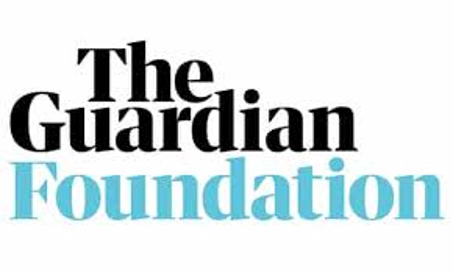
PGCE Historians and The Guardian Foundation – the issue of fake news
Tom Donnai, Subject Leader, PGCE History

Last week ended with a new input for our History PGCE, which generated some really good discussion and follow-up work, as PGCE Historians grappled with the topical and timely issue of fake news and media literacy. So much of the recent political discourse dominating the headlines has centred around the validity of political rhetoric and the role of different media outlets in propagating different claims and promoting different political agenda. Yet how can we teach the teachers to untangle all this information for students and help them to make reasoned judgements on the accuracy of the news? Enter Margaret Holborn and Jan Trott of the Guardian Foundation Education Centre, who showcased a superb workshop called Fake or for real – is everything in the news true?
The session helped PGCE Historians to reflect on the challenges school students face when processing the mass of often conflicting information at their fingertips, and offered some frameworks for supporting students to make judgements about the accuracy of such information. We were presented with a number of recent news stories and were asked to make a simple judgement: real or fake? It was interesting to note that there was little consensus on any of the options and that we as (degree educated!) adults are just as prone to being fooled as school students are!
The session started with an activity I would recommend to any teacher in any subject as a ‘hook’ activity – based around an iconic advert for the Guardian I remembered vividly from my own childhood. An absolutely superb way of demonstrating that so much of what we see is open to interpretation and that unconscious bias is complex and ever present!
PGCE History trainee Julia Morton gives her perspective on the session below:
‘Only last week on the day of the US election I sat in the Year 10 form I am partnered with for my placement and answered questions about all things US politics. The extent to which the students were interested and passionate about the election was really evident. As a teacher, maintaining impartiality is of course fundamental to professionalism and meeting part 2 of the Teachers’ Standards. This resulted in an internal dilemma, however. How could I remain impartial, and silent, given the baseless [and in my opinion dangerous] claims being made by the President of the United States about electoral fraud? This was one of the most challenging scenarios I’ve faced so far as a trainee teacher and was quite unexpected. Conversations with an experienced member of staff, as so often is the case, were really helpful and I was reminded that the most important thing we can do as History teachers is to present the facts and allow students to formulate their own opinions and judgements.
On the 13th November, The Guardian Foundation Education Centre (@GuardianEduCent on Twitter) ran a brilliant session with The University of Manchester PGCE Historians based on media literacy and fake news. The session was essentially about training students to ‘handle’ news and showing them how to seek truth and validity in the news they consume. The session provided me with loads of ideas for my own teaching and the potential for similar activities in my own teaching.
Margaret Holborn and Jan Trott from the Guardian Foundation talked to us in detail about the work they do with primary and secondary students through workshops on fact checking news and ensuring reliability in what young people consume. The work that the organisation carries out is summed up through four key aspects, ‘access, participation, understanding and critical analysis’ and it occurred to me that these are pretty much the cornerstones of what we strive for as Historian teachers. They aim to not only educate young people in media literacy but also ensure the development of a wider talent pool for those who wish to have careers in journalism and other related careers.
The talk consisted of us challenging our own perceptions of news, identifying examples of recent news stories, and finding out if they were real or fake. In terms of steps young people should take when accessing news and ensuring there is truth in it, we were provided with a framework that had many similarities with the one we already have for working with historical interpretations: who reported it, what is it about, where is the information from and when was it published. This ensures that young people (and it is of course not exclusive to young people, everyone can take something from these tips) do not take a story and run with it, creating rumours, and spreading misinformation. The key is to encourage students to test the validity of all the media they consume and come to their own conclusions.

My favourite fact of the day (every day is a learning day after all!) In 1672 Charles II issued a proclamation banning the circulation of false news. It seems that fake news is not just a recent phenomenon. Fake news is not a new concept, and this is something we should emphasise to students when we teach them about accessing news and media literacy. A huge thank you to Margaret and Jan from The Guardian Foundation Education Centre for their time and extremely valuable talk. I know that the PGCE Historians and I found it to be of great value and will move forward in our teaching careers unafraid to tackle issues such as media literacy and the ever-growing culture around the phrase ‘fake news’.
By Julia Morton, PGCE History, University of Manchester




0 Comments